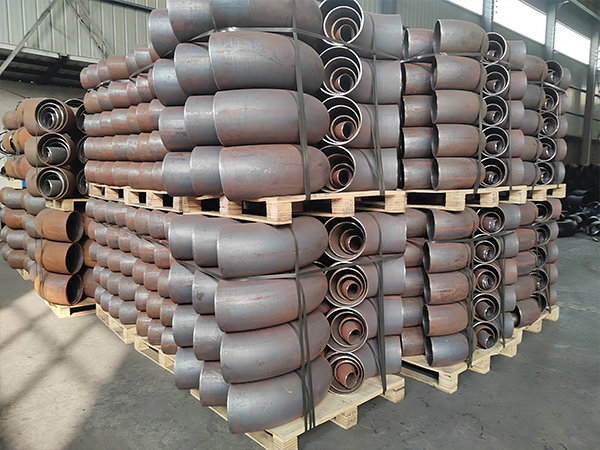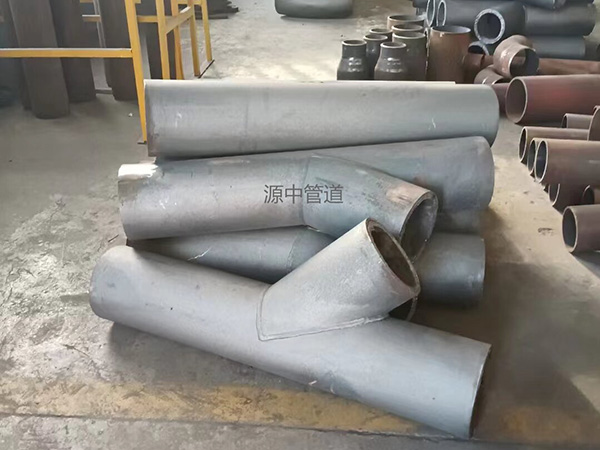NewsDetails
Application of Plastic-Lined Pipes in High-Sand Wastewater Transport
author:Yuanzhong time:2025-09-20 21:37:52 Click:69
The transport of high-sand wastewater presents a severe challenge due to the combined effects of abrasion and often corrosion.Selecting the right piping material is critical for system longevity and reliability.Plastic-lined pipes(such as polyethylene PE,polypropylene PP,or polyvinylidene fluoride PVDF)offer a viable solution,but their application requires careful consideration of both their advantages and limitations.
1.The Challenge:Why High-Sand Wastewater is Demanding
High-sand wastewater is a highly abrasive slurry.The sharp,hard sand particles act like cutting tools,constantly eroding the pipe's inner surface.This abrasive wear is exacerbated by:
High Flow Velocity:Increased velocity gives particles more kinetic energy,accelerating erosion.
High Solids Concentration:More particles mean more contact and wear.
Turbulent Flow:Especially at bends,tees,and valves,turbulence causes particles to impinge on the pipe wall at various angles.
If the wastewater is also acidic,alkaline,or contains other chemicals,corrosion becomes an additional factor,creating a synergistic effect that can degrade pipes even faster.
2.Advantages of Plastic Linings in This Application
Plastic-lined pipes(a steel pipe with a monolithic,internally welded plastic liner)bring specific benefits to this challenging service:
Superior Corrosion Resistance:This is their primary advantage.Linings like PP and PVDF offer excellent resistance to a wide range of acidic and alkaline effluents,protecting the structural steel pipe from corrosion completely.
Smooth Surface:The inner surface of extruded plastic linings is very smooth,which reduces friction and minimizes the risk of scale or sludge buildup that can constrict flow.
Cost-Effectiveness for Corrosive Streams:For wastewater that is both abrasive and corrosive,plastic-lined pipes often provide a more economical solution than solid stainless steel or high-alloy pipes.
3.Critical Limitations and Risks with Abrasive Sands
It is crucial to understand that plastic linings are not the most wear-resistant option for pure,severe abrasion.Their application in high-sand services is conditional.
Abrasion Resistance is Moderate:While tougher than bare steel,plastics like PE and PP are softer than specialized abrasion-resistant materials like alumina ceramics or cast basalt.They will experience measurable wear over time.
Erosion at Turbulence Points:The liner is most vulnerable at points of flow disruption.Bends,reducers,and valves will experience concentrated erosion,potentially leading to premature failure at these specific locations.
Temperature and Pressure Constraints:The liner material dictates the maximum operating temperature(e.g.,~80-100°C for PP,~120-140°C for PVDF)and pressure.The plastic liner can also be susceptible to thermal expansion issues similar to PTFE if not properly designed.
4.Key Considerations for Successful Application
To successfully use plastic-lined pipes for high-sand wastewater,the following factors must be meticulously evaluated:
Lining Material Selection:
Ultra-High Molecular Weight Polyethylene(UHMW-PE):This is often the best choice among plastics for abrasion resistance.UHMW-PE has an exceptionally high resistance to wear,making it significantly more suitable for sandy water than standard PE or PP.
PVDF:Offers better chemical and temperature resistance than PP/PE but has similar abrasion resistance.It is a good choice if the chemical composition is highly aggressive.
System Design to Minimize Wear:
Flow Velocity:Design the system to operate at moderate,laminar flow velocities.Avoid excessively high speeds that dramatically increase erosion.
Layout:Minimize the number of bends and changes in direction.Where bends are necessary,use long-radius elbows to create a gentler flow path and reduce impingement.
Protect Critical Points:Consider using more abrasion-resistant materials(e.g.,ceramic-lined elbows or replaceable wear backs)at high-wear areas like the discharge side of pumps and the first bend after a pump.
Installation and Inspection:
Proper Installation:Ensure the liner is not damaged during installation.Follow manufacturer guidelines for flanging and assembly.
Regular Monitoring:Implement a proactive inspection schedule.Use ultrasonic thickness testing to monitor wear rates on the steel shell,especially at bends and downstream from pumps.This helps plan maintenance before a failure occurs.
Conclusion:
Plastic-lined pipes are a targeted solution for high-sand wastewater that is also corrosive.They are not ideal for applications dominated by extreme,pure abrasion.
Ideal Use Case:Transporting a moderately abrasive,corrosive sand slurry at controlled velocities,where their corrosion resistance provides the primary benefit.
When to Look Elsewhere:If the wastewater is non-corrosive but very abrasive,or operates at very high velocities,more robust options like ceramic-lined pipes or abrasion-resistant steel pipes will offer a significantly longer service life.
The decision should be based on a careful analysis of the sand concentration,particle size,flow velocity,chemical corrosivity,and temperature,with a clear understanding that the plastic liner's primary role is to combat corrosion,not extreme abrasion.
 Recommended Products
Recommended Products
 Contact us
Contact us
—— Contact:Manager
—— Tel:+86 19833790008
—— Email:772878082@qq.com
—— Url:http://www.yuanzhongpipeline.com
—— Address:Pucheng Development Zone, Yanshan County, Hebei Province















